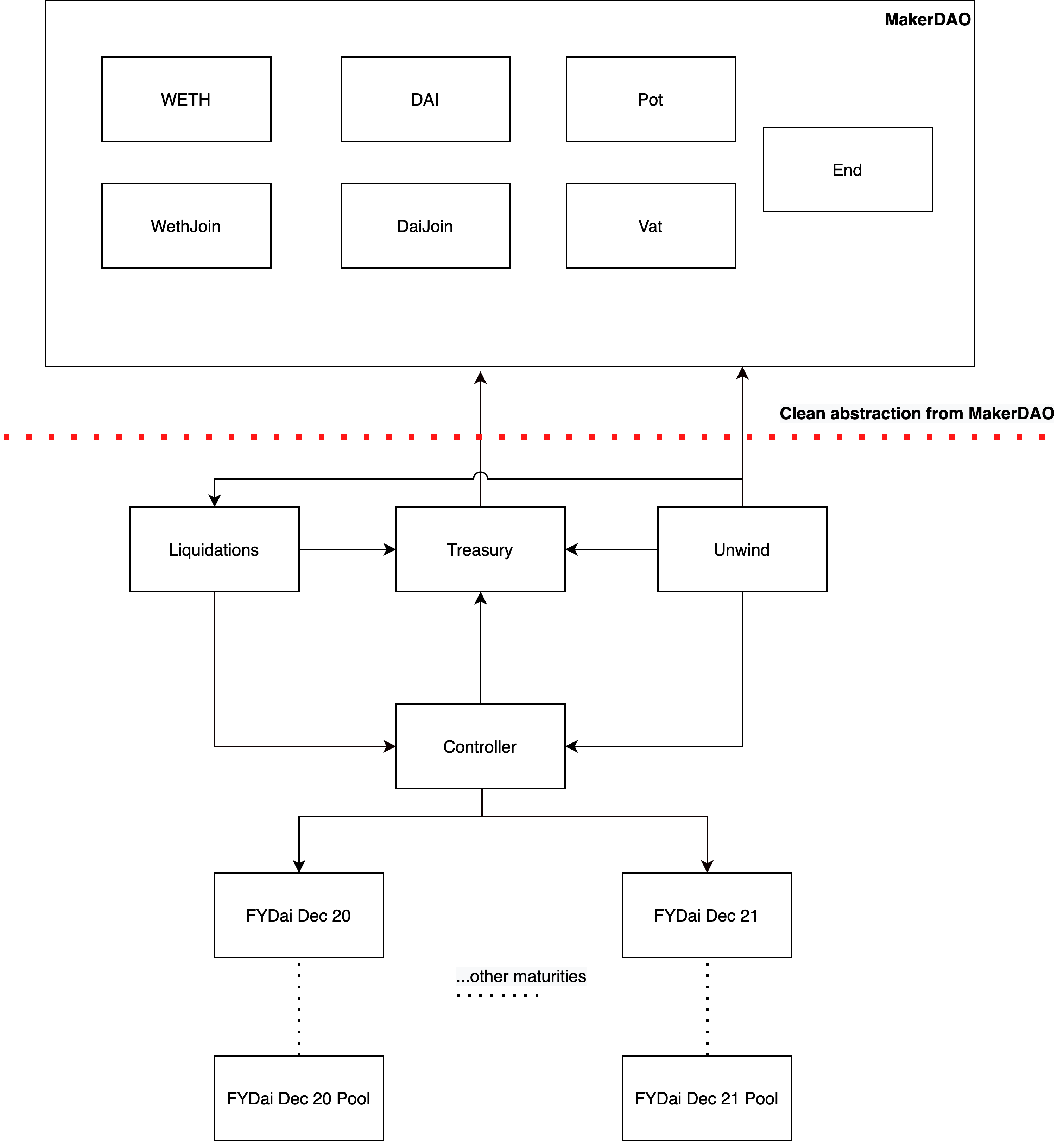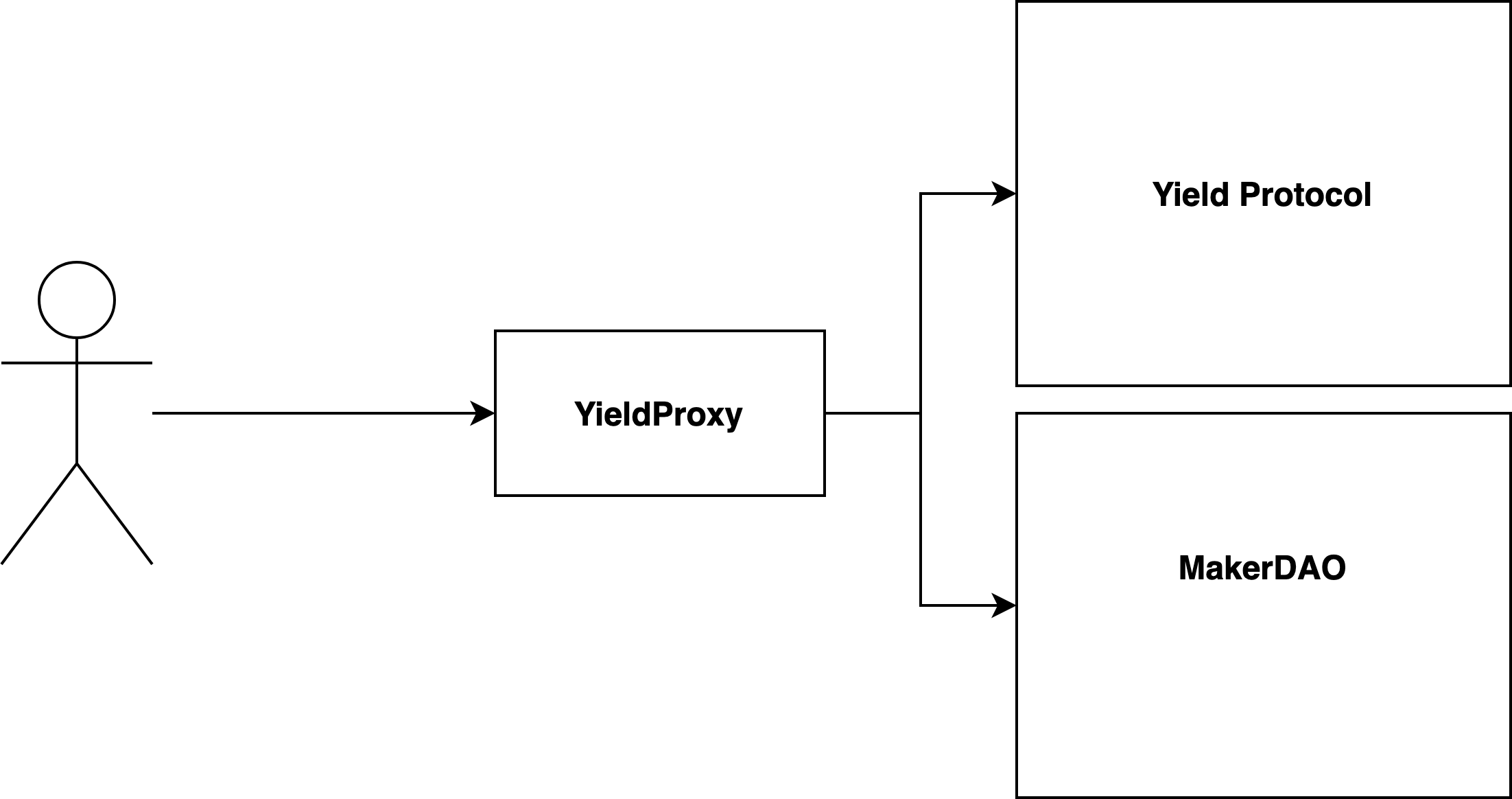Developer Documentation
The quickest place to get started is the fyDAI repository. Clone it and run the tests:
git clone https://github.com/yieldprotocol/fyDai/
yarn
yarn test
The Yield specification can be found here.
Yield Protocol is made up of the core contracts and the periphery.
The core contracts are responsible for the management of collateral and debt, issuing and redeeming fyDAI and interacting with MakerDAO's contracts, amoung other functions:
Treasuryis the single point of contact of the Yield Protocol with MakerDAO contracts, including Chai, for the purpose of asset management.FYDaicontracts are ERC20 contracts that provide tokens that are redeemable for Dai upon reaching a specific maturity. After maturity, the redemption value earns the Dai Savings Rate.Controllermanages collateral and debt for all users, issuing fyDai tokens as debt is taken or burning them as it is repaid.Liquidationsallows to take over user accounts when they are undercollateralized, selling the colalteral to settle the outstanding debtUnwindallows to redeem fyDai, settle debt, and settle ongoing auctions in the event of a MakerDAO shutdown.
The pool contracts allow Dai-fyDai trading.
The periphery contracts are responsible for providing convenience functions to the frontend.
Below you may see a high level graph of how the contracts interact with each other.

Actions in Yield are multi-step processes. In order to improve UX we also provide a stateless proxy contract in order to batch together complex calls. Future versions of the YieldProxy will enable converting Maker vaults to Yield vaults (and vice versa). Users are expected to interface with the protocol via these proxy contacts.
